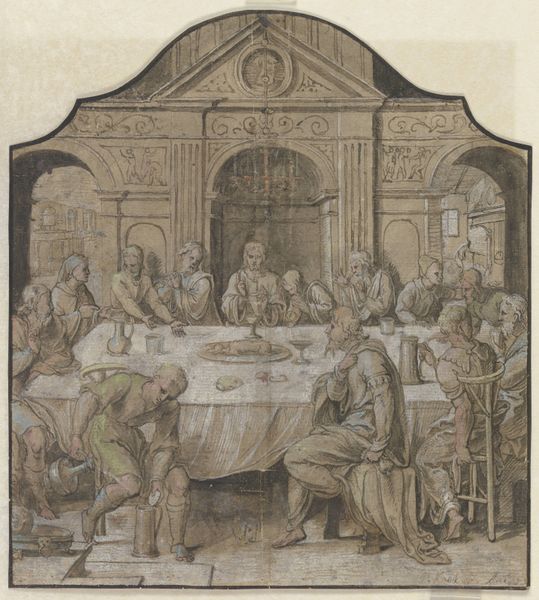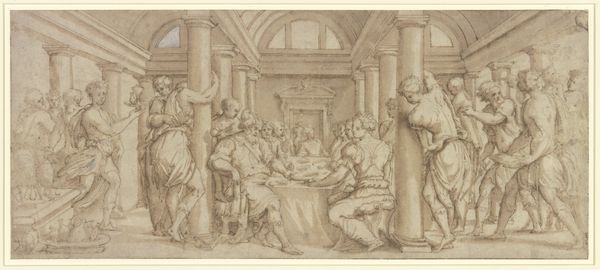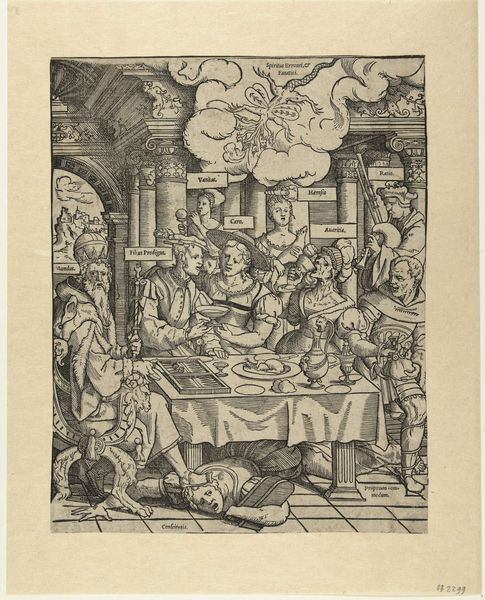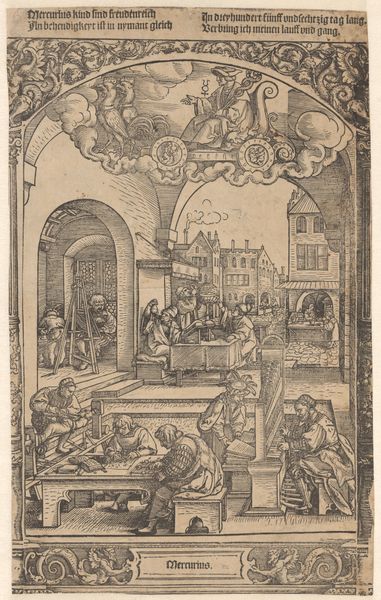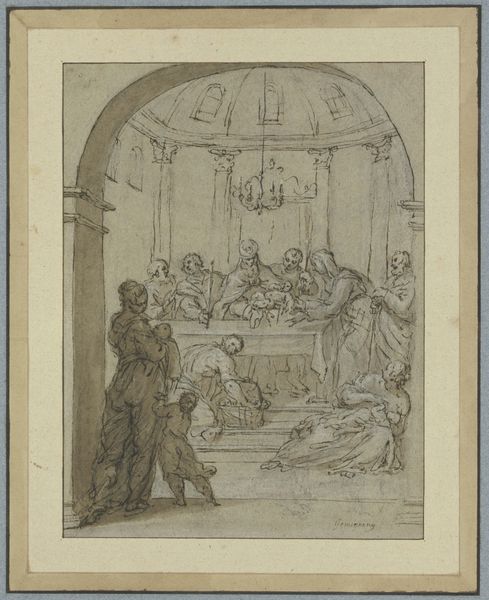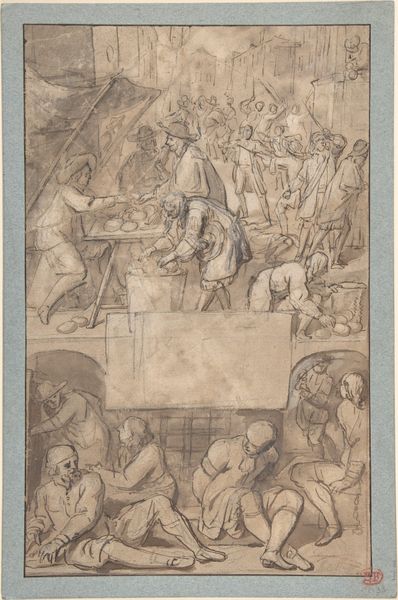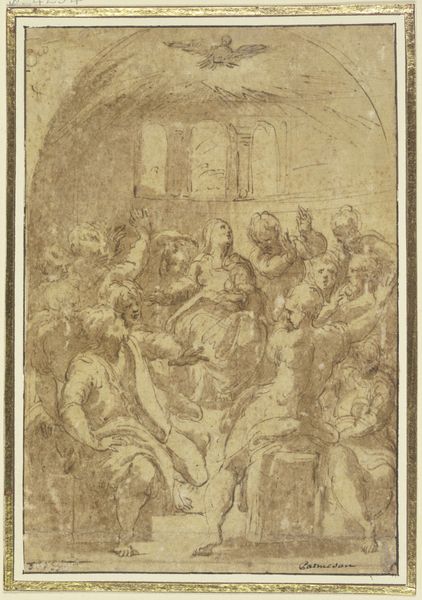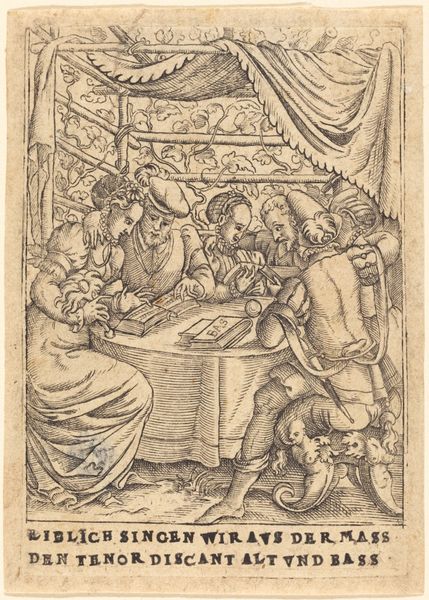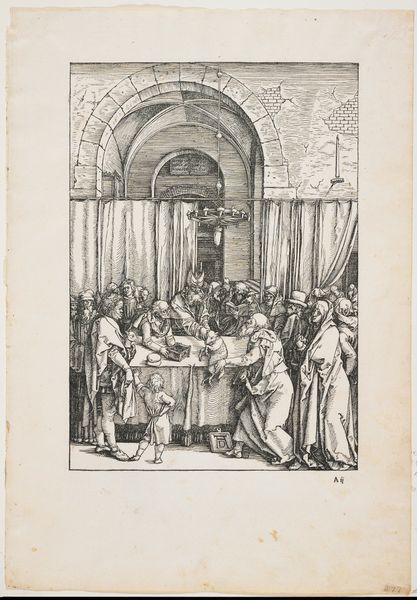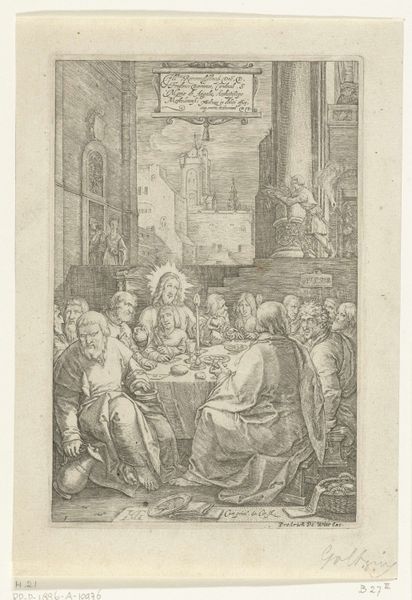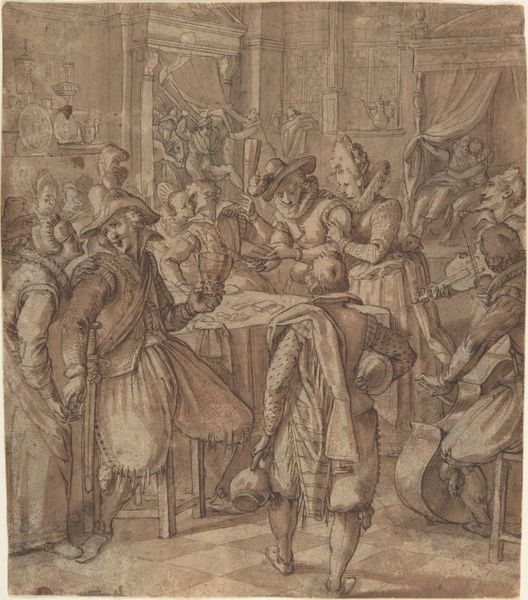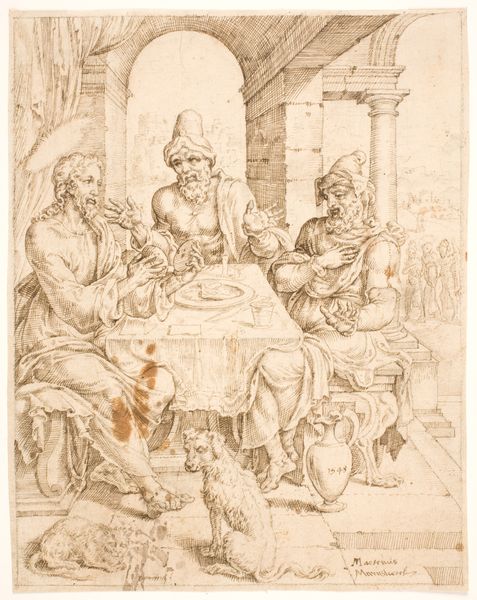
drawing, print, engraving
#
drawing
# print
#
figuration
#
11_renaissance
#
history-painting
#
northern-renaissance
#
engraving
Dimensions: 5 5/8 x 3 15/16 in. (14.3 x 10.0 cm)
Copyright: Public Domain
Curator: Welcome. Here we have "The Last Supper," an engraving by Nicolaas van der Horst, dating roughly between 1610 and 1646. It’s currently held at the Metropolitan Museum of Art. Editor: The first thing that strikes me is the arrangement, somewhat chaotic but theatrically staged, wouldn't you agree? A central round table dominating the scene, surrounded by a flurry of figures. Curator: It is a particularly dynamic rendering of this pivotal biblical scene. Considering van der Horst's origins and the context of early 17th-century printmaking in Antwerp, this work speaks volumes about the commodification of religious imagery. The labor involved in producing and distributing engravings made such scenes accessible to a broader public, turning faith into a household commodity. Editor: Yes, but look at the composition: the strong diagonals converging toward Christ. And observe how the linear quality of the engraving— those tight cross-hatching marks— lends a certain dramatic tension. The architectural setting provides an intriguing frame that draws your eye toward the narrative core. Curator: Notice, too, the staffage in the background— the servants with food, the glimpse of city architecture outside. This elevates a biblical story into an earthly, almost commonplace event. Editor: I'm drawn to the play of light and shadow—how it articulates form and imbues the scene with such somber reflection. There's a palpable sense of foreboding that seeps from the image’s graphic depth. It almost creates its own visual language. Curator: And this highlights a shift towards accessibility through art making; engraving allowed for wider circulation of religious stories at a time when the Reformation was reshaping cultural identities and how devotional material circulated. The material realities of this print are crucial to understanding its societal impact. Editor: Ultimately, "The Last Supper," as Van der Horst interprets it, utilizes this engraving process as a powerful lens through which we confront our mortality and examine human relationships against the backdrop of divine events. Curator: Agreed. And situating it within the socio-economic conditions of its creation illuminates the intersection of labor, faith, and consumption in shaping cultural narratives.
Comments
No comments
Be the first to comment and join the conversation on the ultimate creative platform.

